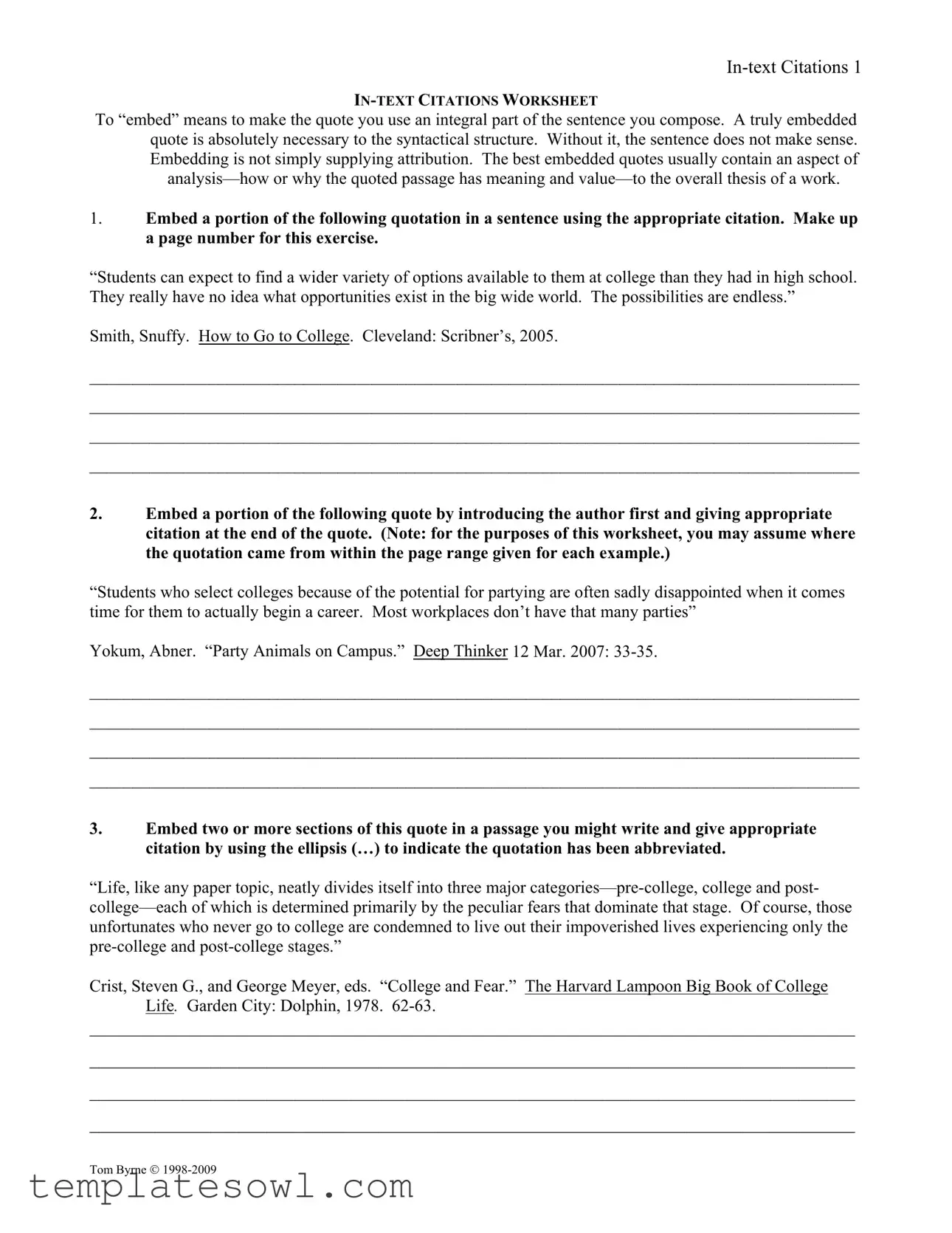In-text Citations 1
IN-TEXT CITATIONS WORKSHEET
To “embed” means to make the quote you use an integral part of the sentence you compose. A truly embedded quote is absolutely necessary to the syntactical structure. Without it, the sentence does not make sense. Embedding is not simply supplying attribution. The best embedded quotes usually contain an aspect of
analysis—how or why the quoted passage has meaning and value—to the overall thesis of a work.
1.Embed a portion of the following quotation in a sentence using the appropriate citation. Make up a page number for this exercise.
“Students can expect to find a wider variety of options available to them at college than they had in high school. They really have no idea what opportunities exist in the big wide world. The possibilities are endless.”
Smith, Snuffy. How to Go to College. Cleveland: Scribner’s, 2005.
__________________________________________________________________________________________
__________________________________________________________________________________________
__________________________________________________________________________________________
__________________________________________________________________________________________
2.Embed a portion of the following quote by introducing the author first and giving appropriate citation at the end of the quote. (Note: for the purposes of this worksheet, you may assume where the quotation came from within the page range given for each example.)
“Students who select colleges because of the potential for partying are often sadly disappointed when it comes time for them to actually begin a career. Most workplaces don’t have that many parties”
Yokum, Abner. “Party Animals on Campus.” Deep Thinker 12 Mar. 2007: 33-35.
__________________________________________________________________________________________
__________________________________________________________________________________________
__________________________________________________________________________________________
__________________________________________________________________________________________
3.Embed two or more sections of this quote in a passage you might write and give appropriate citation by using the ellipsis (…) to indicate the quotation has been abbreviated.
“Life, like any paper topic, neatly divides itself into three major categories—pre-college, college and post- college—each of which is determined primarily by the peculiar fears that dominate that stage. Of course, those unfortunates who never go to college are condemned to live out their impoverished lives experiencing only the pre-college and post-college stages.”
Crist, Steven G., and George Meyer, eds. “College and Fear.” The Harvard Lampoon Big Book of College Life. Garden City: Dolphin, 1978. 62-63.
__________________________________________________________________________________
__________________________________________________________________________________
__________________________________________________________________________________
__________________________________________________________________________________
